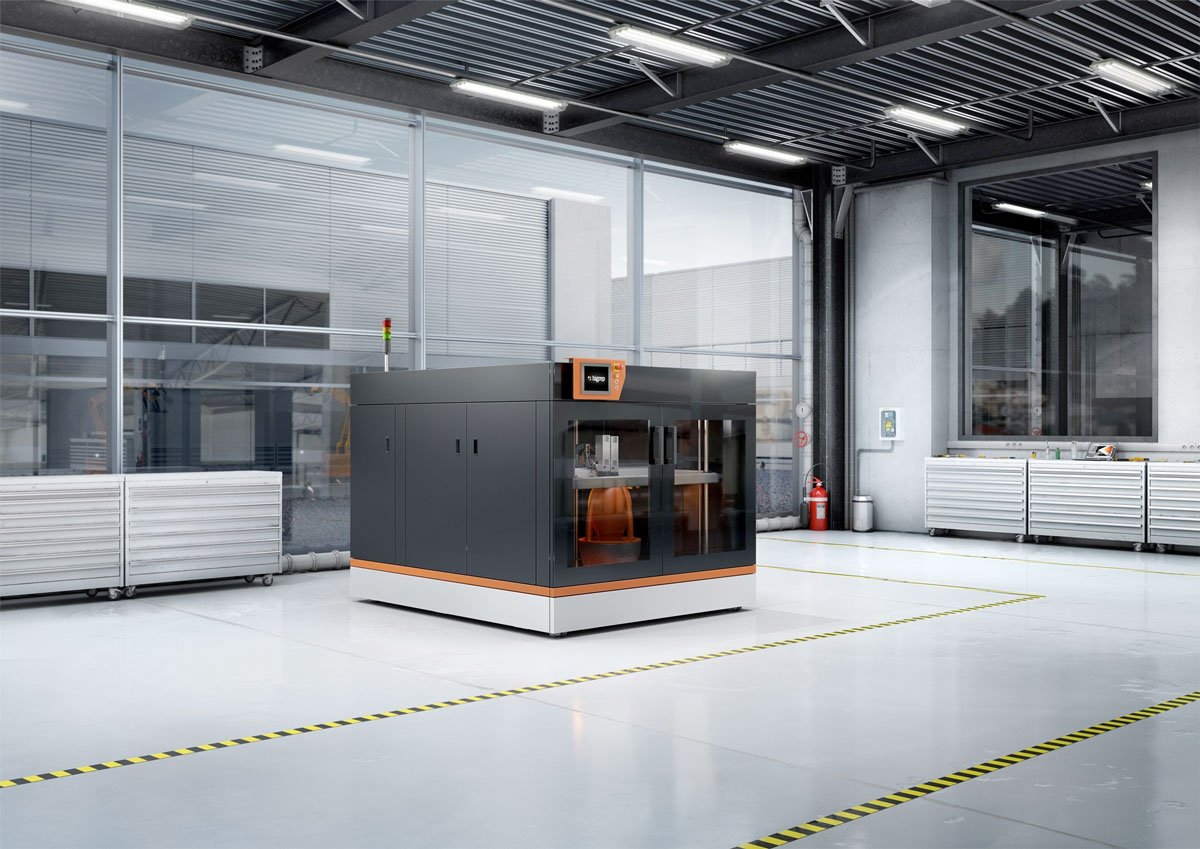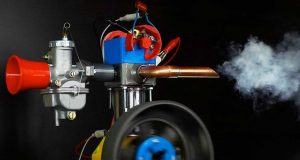Additive manufacturing has made the successful journey from research labs to prototypes and small-batch production. A broad range of manufacturing companies are now printing their own spare parts or individual special components. The technology is now about to take its next development step, a move that is designed to introduce it into series production. It faces a number of huge challenges along the way, including: Up to now, the technology has not been connected to the automated world of manufacturing. Through the development partnership between BigRep and Bosch Rexroth additive manufacturing will to tap its full potential for the factory of the future.
3D printing has already found a home in the aviation and automotive industries as a flexible manufacturing technology that is used to produce spare parts, prototypes and small batches. But other industries, ranging from mechanical engineering to medical technology, are still assessing its potential uses. The market is huge – just like the technological and commercial payoffs. For instance, it takes 3D printers just one process step to produce components for which several parts had to be produced and assembled in the past.
“Across markets, our industrial customers are in need of reliable, controllable and efficient 3D printers to manufacture high-quality components using industry-grade materials,” said Dr. Stephan Beyer, CEO of BigRep. For this reason, BigRep, the world’s leading manufacturer of the biggest large-scale serial production 3D printers (FFF segment), employs industrial control systems with predefined functionalities. “Open CNC solutions integrated in our new BigRep PRO 3D printer open up a whole new dimension in additive manufacturing,” Beyer said. This solution is being used in highly automated tool machines. In addition, the industrial control systems of Bosch Rexroth are equipped with functions that range from handling to robotics and quality control.
Integrated automation
Compared to other production processes, the manual part of 3D printing is still very high. “Over the medium term, additive manufacturing cannot ignore the need to adapt to the standards of established production processes,” emphasizes Thomas Fechner, Head of the Business Unit New Business at Bosch Rexroth. Automation will enable the processes to become reproducible and trackable, Fechner said. In order to establish the technology widely, it must also be easily accessible. “This means that it should always be available and understood by more people than just technical specialists,” Fechner said.
Goal: completely digital workflow
The key is to develop a comprehensive understanding of the entire process that extends from data generation to quality assurance. “The goal is a completely digital workflow. Data must be able to pass consistently – from the customer order, the CAD software and simulation environments to specific machine movements and quality assurance,” Fechner said. In addition, machine builders and end users must agree on common open standards like OPC UA and OpenAPI, he added.
“Once this happens, we will have fulfilled the requirements needed to establish 3D printing as a key element for Industry 4.0 applications and tap the full potential of the technology,” Beyer said. As a result, it will be possible to do such things as print individual components or spare parts on site in the future and not have to store them in a warehouse. “3D printing is in the process of redefining supply chains,” Beyer said. “Companies will profit from lower capital expenditures, a faster market-entry process and shorter product introduction times.”
Subscribe to our Newsletter
3DPresso is a weekly newsletter that links to the most exciting global stories from the 3D printing and additive manufacturing industry.




























